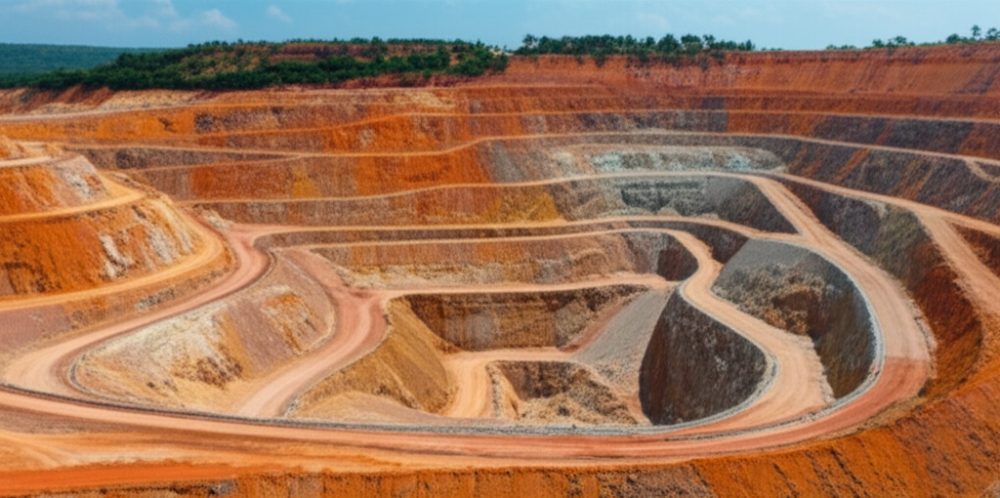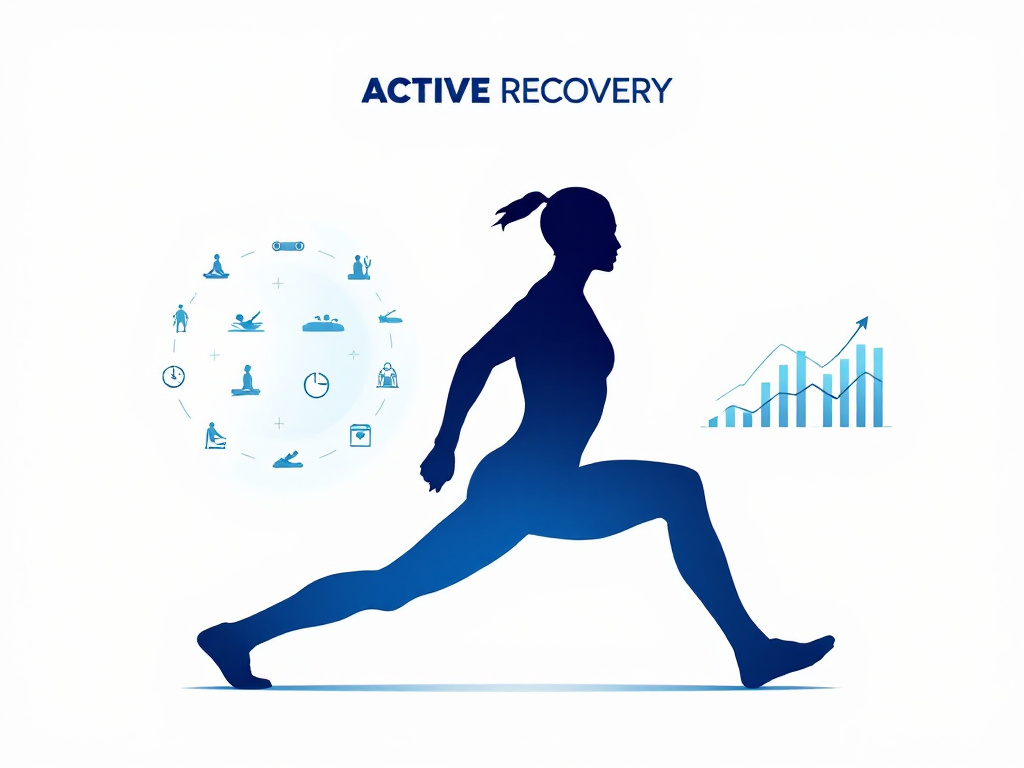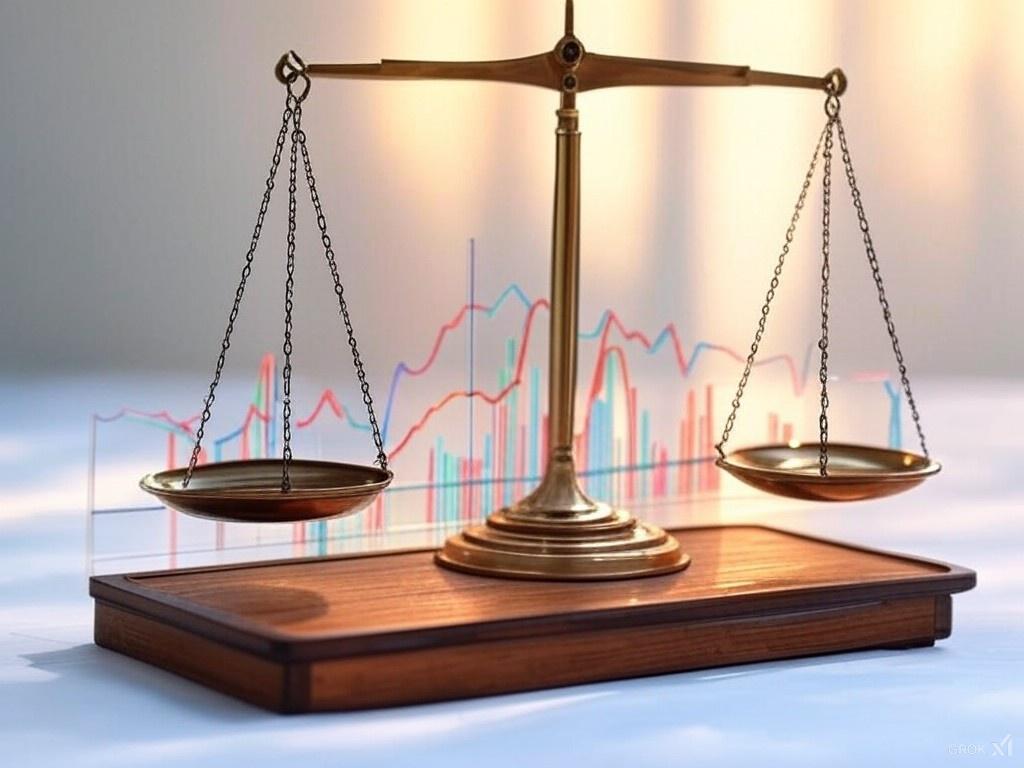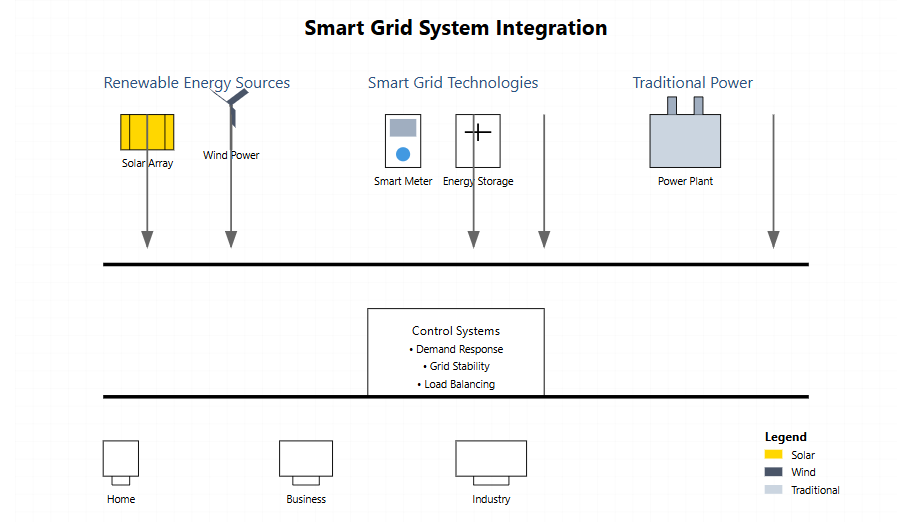Hold Up, Ghana Just Hit the Jackpot (Again!)
For decades, Ghana’s identity in the global commodities market has been inextricably linked to gold, a shimmering testament to its rich geological endowments. Yet, beneath the familiar narrative of “Gold Coast,” a new story is rapidly unfolding, one that promises to redefine the nation’s economic trajectory and strategic importance on the world stage. We are witnessing not merely a discovery, but a quiet unearthing of game-changing minerals that extend far beyond the gleam of bullion. Picture, if you will, a treasure trove of commercially viable iron ore, recently confirmed in staggering quantities, alongside a rather serendipitous, yet profoundly significant, discovery of nickel.
Why should these geological pronouncements command our attention? These are not merely inert rocks; they are the very sinews of the modern industrial economy, the foundational elements for the burgeoning electric vehicle revolution and the sprawling infrastructure of renewable energy. As the world pivots towards a decarbonized future, the demand for such critical minerals intensifies, transforming their geopolitical significance. Thus, this deep dive into Ghana’s latest mineral marvels reveals a narrative far more expansive and impactful than one might initially perceive, signaling a potential paradigm shift for both the nation and the global green economy.
The Big Reveal: What’s All the Fuss About?
The epicentre of this burgeoning mineral narrative lies in Ghana’s Oti Region, a locale now firmly etched onto the global geological map, boasting a “double whammy” of both commercially viable nickel and colossal heaps of iron ore. The nickel discovery, in particular, carries an intriguing backstory, emerging unexpectedly during routine iron ore exploration efforts in April 2025. This serendipity, however, quickly gave way to a palpable excitement, as initial assays indicated concentrations exceeding 1%, a figure that unequivocally signals the economic viability for mining. This isn’t just a trace element; it’s a deposit that screams potential.
While nickel emerges as the shiny new kid on the block, iron ore, in contrast, is an “OG treasure,” its presence in Ghana known for ages. Yet, the true scale of its commercial viability remained somewhat obscured until recent, rigorous drilling programs. These efforts have now confirmed an estimated 1.7 billion tons of iron ore, a volume that places Ghana firmly amongst significant global reserves. The nation’s aspirations for industrialization, particularly in steel production, now stand on a much firmer foundation.
Such momentous discoveries are rarely the work of chance alone. Big shouts, therefore, are due to the collaborative prowess of the Ghana Integrated Iron and Steel Development Corporation (GIISDEC) and the Ghana Geological Survey Authority (GGSA), whose meticulous exploration and dedicated research have brought these riches to light. Their diligence has not only unveiled economic potential but also strategic imperative.
Indeed, the underlying significance of these finds cannot be overstated: they are pivotal for “powering the future.” Nickel, for instance, is super critical, forming an indispensable component in the high-energy-density batteries required for electric vehicles and the sophisticated storage solutions essential for our renewable energy grids. This positions Ghana squarely on the global “green” map, elevating its status beyond traditional commodities. Yet, a period of measured anticipation remains: we are all on pins and needles, awaiting the certified lab results expected around September 2025, which will provide the full, juicy details on the precise volume and grade of these remarkable discoveries.
A Quick Trip Down Memory Lane: Iron Ore’s Ghanaian Roots
The narrative of iron ore in Ghana is not a recent revelation, but rather a story deeply embedded in the nation’s geological past, stretching back nearly a century. This long-time coming tale began its first documented chapter in Shieni, where iron ore first showed its face way back in 1929. It was a nascent hint of the vast potential that lay beneath the Ghanaian soil.
Subsequent decades saw sporadic, yet significant, efforts to understand and quantify these reserves. The good old days of geological surveys in the 1950s and 60s were characterized by earnest, often painstaking, exploration. Even a Soviet team, reflecting the geopolitical landscape of the era, got in on the action, contributing to the foundational understanding of Ghana’s iron ore deposits. These were the patient, slow-burn years of geological reconnaissance, laying the groundwork for the more precise and commercially oriented assessments of today.
Nickel’s discovery, however, offers a stark contrast to iron ore’s lengthy lineage. Its emergence is an “insta-fame” phenomenon, a very fresh, exciting chapter that has rapidly captured attention, demonstrating how modern exploratory techniques, coupled with a touch of serendipity, can unveil profound new possibilities almost overnight. This juxtaposition of a long-known, deeply historical resource with a sudden, unexpected critical mineral underscores the dynamic and ever-evolving nature of Ghana’s subsurface wealth.
The Buzz: What Are People Saying About This New Era?
The unveiling of these significant mineral deposits has, predictably, ignited a fervent discourse across governmental, industrial, and community spheres, each voicing distinct hopes and caveats for Ghana’s new mineral era. The government, particularly through the Ghana Integrated Iron and Steel Development Corporation (GIISDEC), is practically doing cartwheels, perceiving this as nothing short of Ghana’s golden ticket to becoming a major player in the critical minerals sector, indispensable for the global energy transition. The enthusiasm is palpable, rooted in the potential for profound economic transformation.
Central to this vision is a potent mantra: “Mine It, Make It!” The big goal transcends mere extraction and export; Ghana is determined to build the entire value chain domestically, from the raw material’s initial excavation to its sophisticated processing, right there at home. This ambition reflects a deeper understanding of resource nationalism, echoing the playbook of nations striving to maximize the intrinsic value of their endowments for their own populace, moving beyond the historical pitfalls of being mere exporters of raw materials.
Industry, represented by the Ghana Chamber of Mines, is largely aboard this optimistic vessel, offering a chorus of cheers. However, their support is delivered with a side of astute advice: they are nudging the government to scrap VAT on exploration, a practical measure designed to keep that vital discovery engine running and attract further investment in an inherently risky venture. It’s a pragmatic call to ensure the pipeline of future finds remains robust.
Amidst the excitement, a crucial demand reverberates through the public discourse: “transparency is key.” Everyone, from civil society organizations to the average citizen, is chanting this mantra, underscoring the imperative to ensure these new resources genuinely benefit Ghana and its communities. This collective insistence on transparency is a direct lesson gleaned from past resource booms, where the equitable distribution of wealth often proved elusive. The shadow of the “resource curse” looms as a cautionary tale, compelling a renewed focus on accountable governance and community participation to avert historical missteps.
The Uncomfortable Truth: What Are the Hang-Ups and Headaches?
While the allure of mineral wealth is undeniable, the path to prosperity through extraction is rarely paved without significant challenges, and Ghana’s new mineral dawn is no exception. The “uncomfortable truth” lies in the profound and often indelible marks mining leaves on the environment and society. Let’s be real, large-scale mining is intrinsically invasive. We’re talking scary water pollution, with the potential for highly toxic contaminants like mercury and cyanide leaching into vital water sources – yikes! The specter of widespread deforestation looms large, as vast tracts of land are cleared for operations, turning once fertile land into barren, scarred stretches. Furthermore, the processing of nickel, particularly smelting, is notoriously energy-guzzling, with a high emissions footprint, posing a direct contradiction to the “green” promise of the end products if not managed with utmost environmental foresight.
Compounding these industrial challenges is the perennial and pervasive problem of “galamsey” – illegal small-scale mining. This arch-nemesis of sustainable resource management is a massive, ongoing battle, causing untold environmental devastation, including severe river pollution and land degradation, alongside significant revenue loss for the state. It’s like a whack-a-mole game nobody seems to win, undermining legitimate efforts and casting a long shadow over the sector.
Beyond the environmental ravages, “community concerns are real,” often bearing the brunt of mining’s impact. The poignant question of “where do we go?” resonates deeply with people displaced from their ancestral lands, farmers losing their livelihoods, and entire communities uprooted. Health hazards are a grim reality, with respiratory issues, skin diseases, and contaminated water becoming tragic byproducts of unregulated or poorly managed operations. Perhaps most acutely, there’s a pervasive skepticism encapsulated by the question, “show me the money!” – doubts that the wealth will truly reach average Ghanaians. This sparks fears of a “resource curse,” where rich nations paradoxically remain poor, their vast endowments enriching only a select few. Locals frequently feel left out, marginalized from crucial decisions about their own land and future, fostering resentment and distrust.
Finally, the efficacy of “regulation” presents significant gaps. The laws are often there, but their enforcement? That’s another story, frequently hampered by institutional weaknesses, corruption, and a lack of resources. Disturbingly, some recent policies have even opened up protected areas to mining, a move that rightly sparked considerable controversy and fueled fears of prioritizing short-term gain over long-term ecological preservation. The journey ahead demands not just resource discovery, but a robust and uncompromising commitment to ethical and sustainable governance.
Future Horizons: What’s Next for Ghana’s Mineral Goldmine?
Against the backdrop of both immense potential and sobering challenges, Ghana is meticulously charting its course, envisioning a future where its mineral wealth becomes a true catalyst for national development. The ambition is clear and aggressive: “steel dream by 2027.” Ghana is dead set on processing its own iron ore to produce steel within this timeframe, a strategic move aimed at cutting down on expensive imports and fostering domestic industrialization. This commitment signals a departure from merely exporting raw ore to manufacturing value-added products.
Similarly, for nickel, the plan is to develop the entire supply chain locally, from the ground-breaking extraction to sophisticated processing, right through to the production of battery-grade materials. This integrated approach is designed not only to maximize revenue but also to attract major foreign investors who seek secure, traceable, and ethically sourced critical minerals.
Such industrial expansion, however, necessitates a profound “infrastructure makeover.” To facilitate the efficient movement of vast quantities of ore and finished products, Ghana needs a serious upgrade in its railways and ports – a monumental undertaking requiring significant capital, with estimates suggesting big bucks are needed, potentially upwards of $300 million.
The economic dividends of these initiatives are projected to be substantial. We’re talking thousands of new jobs across the mining, processing, and logistics sectors, alongside a significant bump to Ghana’s GDP. Iron ore alone, with its confirmed reserves, has the potential to add an estimated $1 billion in annual revenue, providing a robust new stream for national development.
Crucially, the government is also focused on “smarter mining laws.” New legislation, expected late 2025/early 2026, is almost ready, promising several progressive changes. These include shorter licenses to encourage more efficient operations, direct revenue sharing with communities to address past grievances and ensure equitable benefits, and stricter rules for mining companies, holding them to higher environmental and social standards.
A broader strategy involves the “green minerals” push. Ghana is actively promoting investment not only in nickel but also in lithium – another critical mineral for the energy transition, which they have also discovered. The aim is to solidify Ghana’s position as a global green energy player, capitalizing on the increasing demand for these essential components. This push is underscored by a big focus on “sustainable is the new sexy,” emphasizing eco-friendly processing methods and robust environmental safeguards to avoid past blunders and build a responsible mining legacy.
A Balancing Act on the Global Stage
Ghana stands at a truly pivotal moment, perched on the cusp of an era defined by profound transformation. These new discoveries of commercially viable iron ore and strategically critical nickel offer an immense economic opportunity, poised to reshape the nation’s industrial landscape and elevate its standing in the global green economy. The potential for job creation, GDP growth, and a diversified revenue base is undeniably compelling.
Yet, this burgeoning promise is accompanied by an equally delicate dance: the imperative to unlock vast mineral wealth while simultaneously ensuring sustainable, equitable, and responsible development. The path ahead is fraught with challenges – the need for stringent environmental protection against the inherent impacts of mining, the critical importance of safeguarding community welfare and ensuring local benefits, and the perennial demand for transparent and accountable governance to prevent the infamous “resource curse.”
Will Ghana successfully navigate these intricate complexities, learning from the lessons of the past and embracing a forward-looking vision? Can it balance the urgent economic imperative with a steadfast commitment to ecological integrity and social justice, truly becoming a green minerals powerhouse on the global stage? The world, undoubtedly, is watching, keenly observing whether this “new shine” will truly illuminate a brighter, more inclusive future for the Ghanaian people.










